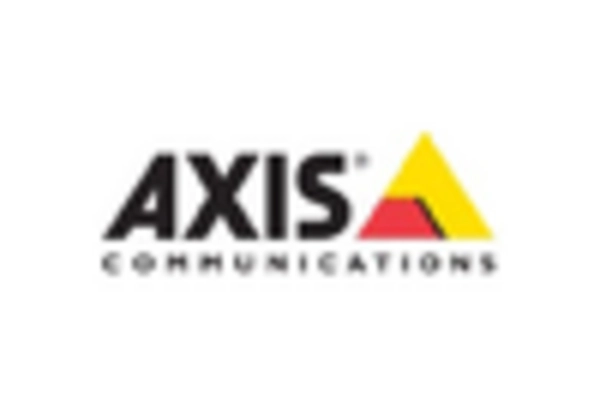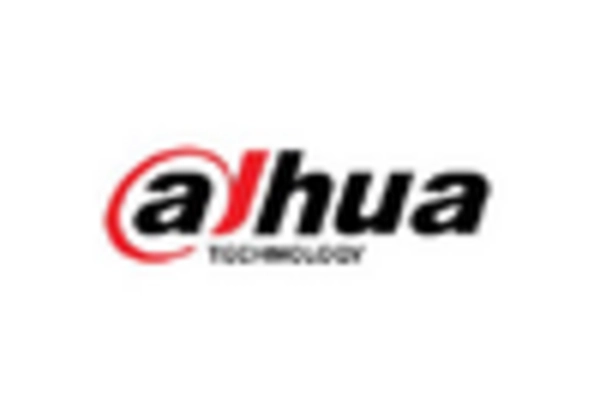The security cameras market in Japan is characterized by a dynamic competitive landscape, driven by technological advancements and increasing demand for surveillance solutions across various sectors. Key players such as Hikvision (CN), Axis Communications (SE), and Sony (JP) are at the forefront, each adopting distinct strategies to enhance their market presence. Hikvision (CN) focuses on innovation, particularly in AI-driven analytics, while Axis Communications (SE) emphasizes partnerships with local distributors to strengthen its regional foothold. Sony (JP), leveraging its expertise in imaging technology, aims to integrate advanced features into its product offerings, thereby enhancing user experience and operational efficiency. Collectively, these strategies contribute to a competitive environment that is increasingly centered around technological differentiation and customer-centric solutions.
In terms of business tactics, companies are localizing manufacturing to reduce costs and improve supply chain efficiency. This approach is particularly evident among domestic players like Sony (JP), which has invested in local production facilities to cater to the specific needs of the Japanese market. The competitive structure of the market appears moderately fragmented, with several key players vying for market share. However, the influence of major companies is substantial, as they set industry standards and drive innovation through their extensive R&D investments.
In October 2025, Hikvision (CN) announced the launch of a new line of AI-powered security cameras designed specifically for urban environments. This strategic move is significant as it aligns with the growing trend of smart city initiatives in Japan, positioning Hikvision (CN) to capture a larger share of the urban surveillance market. The integration of AI capabilities not only enhances the functionality of their products but also addresses the increasing demand for intelligent surveillance solutions.
In September 2025, Axis Communications (SE) expanded its partnership with a leading Japanese telecommunications provider to enhance its distribution network. This collaboration is crucial as it allows Axis to leverage the telecommunications provider's extensive reach, thereby increasing its market penetration. The partnership is expected to facilitate the introduction of new products tailored to local customer needs, further solidifying Axis's competitive position in the market.
In November 2025, Sony (JP) unveiled a new series of high-definition security cameras featuring advanced low-light performance and enhanced image stabilization. This product launch is particularly relevant as it responds to the growing demand for high-quality surveillance solutions in various sectors, including retail and public safety. By focusing on superior image quality, Sony (JP) aims to differentiate itself from competitors and cater to clients seeking reliable and effective surveillance systems.
As of November 2025, the competitive trends in the security cameras market are increasingly defined by digitalization, sustainability, and the integration of AI technologies. Strategic alliances are playing a pivotal role in shaping the current landscape, enabling companies to pool resources and expertise to innovate more effectively. Looking ahead, it is likely that competitive differentiation will evolve, shifting from traditional price-based competition to a focus on innovation, technological advancements, and supply chain reliability. This transition underscores the importance of adaptability and forward-thinking strategies in maintaining a competitive edge in the rapidly evolving market.
















Leave a Comment